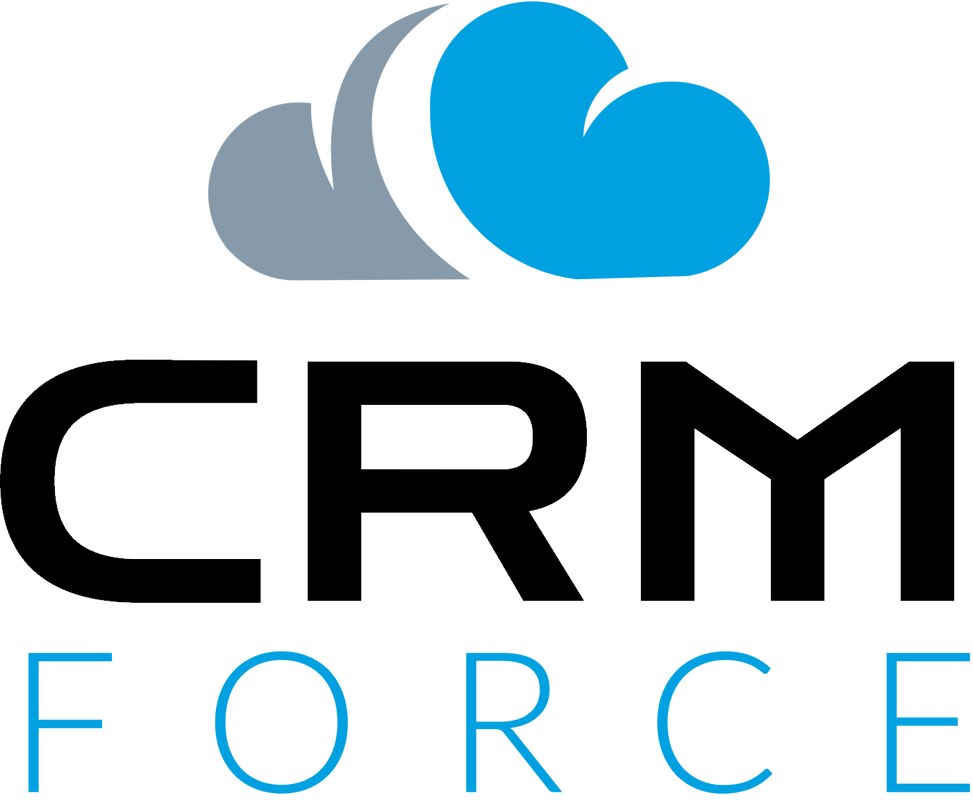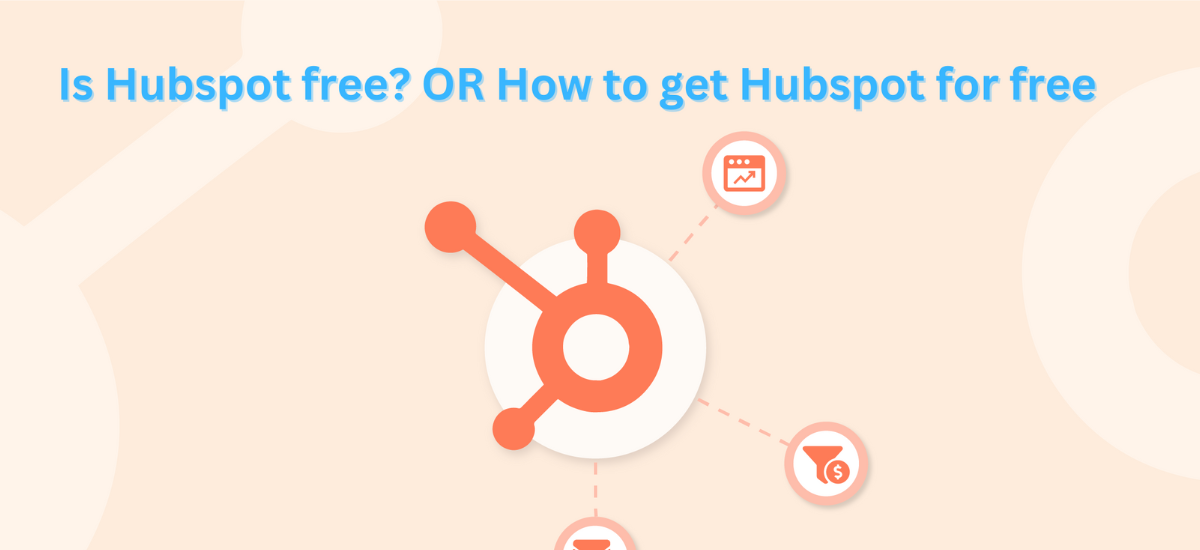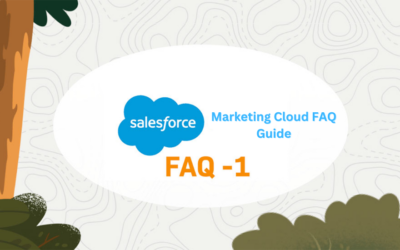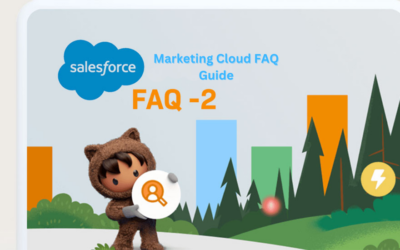In the ever-evolving landscape of digital marketing, where the convergence of technology and strategy shapes the trajectory of businesses, one name stands out as an industry juggernaut: HubSpot. Renowned for its all-encompassing suite spanning marketing, sales, and customer service, HubSpot has become synonymous with transformative digital experiences. In this comprehensive guide, we embark on a meticulous journey to unravel the multifaceted layers of HubSpot, dissecting not only its operational intricacies but also addressing the omnipresent question echoing across boardrooms and startups alike: Is HubSpot truly free? As businesses grapple with the dynamic challenges of staying ahead in a competitive market, we delve into the depths of HubSpot’s pricing model, exploring its tiered structure and the technical nuances that underpin each plan. This exploration serves as the compass for businesses, guiding them through the maze of features and functionalities tailored to different scales, from startups seeking affordable solutions to enterprises demanding cutting-edge technologies.
The heart of our exploration lies in deciphering the mysteries of HubSpot’s free offerings. While the allure of a free CRM and basic email marketing is undeniable, understanding the technical architecture behind these features is paramount. We navigate the intricacies of HubSpot’s CRM, dissecting the data management processes and the algorithms that power lead prioritization. Simultaneously, we peer into the technical foundations of email marketing within the free version, unveiling the infrastructure that ensures deliverability, scalability, and analytics. This isn’t just a guide; it’s a technical roadmap for businesses navigating the landscape of HubSpot’s free tools, empowering them to make informed decisions about integrating these solutions into their digital arsenals. Join us as we unravel the intricate tapestry of HubSpot, decoding its technical language to empower businesses of all sizes to harness its full potential. If you need assistance with Salesforce CRM setup and optimization, companies like CRM Force can provide valuable expertise and support.
1- Understanding HubSpot’s Pricing Model
A. The Tiered Structure of HubSpot Plans
HubSpot’s Market Positioning:
HubSpot positions itself as a versatile solution catering to businesses of varying sizes. The tiered pricing model reflects this scalability, offering plans tailored to the diverse needs of startups, mid-sized companies, and large enterprises.
The technical architecture supporting these plans is designed to flexibly accommodate varying user loads, data volumes, and feature requirements.
Basic, Professional, and Enterprise Tiers:
The tiered structure consists of the Basic, Professional, and Enterprise plans. Each tier unlocks additional features and functionalities, reflecting a progressive sophistication in the technical capabilities of the platform.
The technical architecture behind each tier is optimized to deliver a specific set of features, ensuring efficiency and performance aligned with the needs of businesses at different stages.
Scalability and Performance Optimization:
Scalability is a key consideration in the technical design of HubSpot’s plans. The architecture is built to scale horizontally and vertically, accommodating growing user bases and increasing data volumes.
Performance optimization strategies, such as caching mechanisms and load balancing, are likely implemented to ensure a responsive user experience across different plans.
Integration Capabilities:
HubSpot recognizes that businesses use a variety of tools in their operations. The technical architecture of the plans supports seamless integrations with third-party applications, ensuring data flows smoothly between HubSpot and other tools in a business’s tech stack.
APIs play a crucial role in these integrations, enabling the exchange of data in real-time while maintaining data integrity and security.
Advanced Analytics and Reporting:
As users progress from the Basic to the Enterprise plan, the technical capabilities for analytics and reporting become more advanced. The Enterprise plan likely incorporates machine learning algorithms for predictive analytics, offering deeper insights into customer behavior and marketing performance.
The backend systems supporting analytics are optimized for processing large datasets efficiently, ensuring that businesses can derive actionable insights from their data.
B. Unpacking the Free Version
Technical Limitations of the Free Version:
While the free version provides an entry point to HubSpot’s ecosystem, it comes with certain technical limitations. For example, the free CRM may have constraints on the number of contacts it can efficiently handle in real-time.
Understanding these limitations is crucial for businesses to align their expectations and evaluate when a transition to a paid plan might be necessary for their growing needs.
Core Features of the Free Version:
The technical architecture of the free version is designed to provide essential functionalities without compromising user experience. The free CRM, for instance, would still employ sophisticated algorithms for contact management and basic analytics.
The backend infrastructure is optimized to deliver a seamless user experience while adhering to the resource constraints of the free plan.
Email Marketing in the Free Version:
The technical intricacies of email marketing in the free version involve the delivery of emails to contacts. While the features are basic, the platform likely employs mechanisms for email deliverability, spam detection, and basic tracking.
Cloud-based infrastructure ensures that businesses can utilize email marketing capabilities without investing in a separate email marketing tool.
2- Exploring the Free HubSpot Features
A. Technical Architecture of HubSpot’s CRM
Data Organization and Management:
HubSpot’s free CRM relies on a sophisticated technical architecture to organize and manage customer data efficiently. This involves a relational database system capable of handling diverse data types, ensuring that businesses can store and retrieve information about their contacts seamlessly.
Indexing and caching mechanisms optimize data retrieval speed, ensuring that user interactions with the CRM are responsive.
Lead Scoring Algorithms:
The technical underpinnings of lead scoring in the CRM involve the implementation of algorithms that analyze user interactions, assigning scores to leads based on predefined criteria. These algorithms may take into account factors like email engagement, website visits, and social media interactions.
Real-time processing ensures that lead scores are updated dynamically, providing sales teams with the latest insights into lead quality.
Communication Channels Integration:
HubSpot’s CRM integrates various communication channels, from emails to social media interactions. The technical architecture facilitates seamless communication tracking, allowing businesses to consolidate customer interactions in one central hub.
APIs and webhooks play a crucial role in connecting the CRM with external communication tools, ensuring a unified view of customer interactions.
B. Email Marketing in the Free Version
Email Deliverability Infrastructure:
The technical infrastructure supporting email marketing in the free version is designed to ensure high deliverability rates. This involves implementing authentication protocols like SPF and DKIM to verify the legitimacy of outgoing emails.
Anti-spam mechanisms are in place to enhance deliverability, with the platform actively monitoring and adjusting strategies to maintain a positive sender reputation.
Contact Segmentation and Targeting:
Even in the free version, the technical capabilities for contact segmentation are present. The architecture allows businesses to categorize contacts based on various criteria, such as demographics, behaviors, or interactions.
Dynamic segmentation features ensure that contact lists are continuously updated based on real-time data, allowing for targeted and personalized email campaigns.
Basic Email Analytics:
The technical backend of the free email marketing features includes basic analytics capabilities. This involves tracking metrics such as open rates, click-through rates, and bounce rates.
Cloud-based storage of analytics data allows businesses to access and analyze campaign performance, providing insights into the effectiveness of their email marketing efforts.
In this detailed exploration of Section 2, we’ve uncovered the technical intricacies of HubSpot’s free CRM and email marketing features. Understanding the data management, lead scoring algorithms, email deliverability, and analytics capabilities empowers businesses to make the most of these foundational features within the constraints of the free version.
3- Delving into the Technical Aspects of HubSpot’s Free Marketing Hub
A. Real-time Data Processing in Social Media Management
Data Ingestion and Processing:
HubSpot’s Free Marketing Hub relies on real-time data processing to handle the influx of social media interactions. This involves efficient data ingestion mechanisms that collect data from various social media channels and process it in real time.
The technical architecture uses stream processing frameworks to analyze social media data as it arrives, ensuring timely insights into audience engagement.
Machine Learning Algorithms:
Social media management in HubSpot’s Free Marketing Hub is enhanced by machine learning algorithms. These algorithms predict trends, optimal posting times, and user engagement patterns based on historical data.
The technical backend continuously refines these algorithms, adapting to changes in social media algorithms and user behaviors to optimize content visibility.
B. Ad Tracking and Basic SEO Analytics
Pixel Implementation for Ad Tracking:
HubSpot’s Free Marketing Hub employs pixel tracking for accurate ad tracking. Pixels are snippets of code placed on websites to track user interactions. The technical infrastructure ensures seamless implementation of pixels across various platforms.
Real-time data processing captures user interactions with ads, providing detailed insights into ad performance, click-through rates, and conversion events.
SEO Analytics Technical Foundations:
Basic SEO analytics in the Free Marketing Hub involve tracking keyword performance, page views, and search engine ranking. The technical architecture includes web crawling mechanisms to index website content and monitor changes in search engine algorithms.
API integrations with search engines enable real-time retrieval of SEO-related data, ensuring that businesses have up-to-date information for optimizing their online presence.
4- Harnessing the Power of HubSpot Academy
A. The Technical Landscape of HubSpot Academy
HubSpot Academy serves as a valuable resource for individuals and businesses seeking to enhance their skills in inbound marketing, sales, and customer service. This section explores the technical foundations that make HubSpot Academy an effective and accessible educational platform.
Learning Management System (LMS) Architecture:
HubSpot Academy’s technical landscape relies on a robust Learning Management System (LMS). This involves intricate architecture designed to deliver educational content seamlessly.
The LMS facilitates the organization, tracking, and delivery of educational content. It involves databases that store user progress, course completion data, and other relevant metrics.
Cloud-based infrastructure ensures that educational content is accessible globally, enabling users to learn at their own pace from anywhere in the world.
Content Delivery Mechanisms:
HubSpot Academy employs various content delivery mechanisms, including video lectures, written materials, quizzes, and hands-on projects. Each of these components is intricately woven into the technical fabric of the platform.
Videos are streamed using advanced video hosting solutions, ensuring smooth playback and responsiveness across devices. Content caching and content delivery networks (CDNs) may be utilized to optimize the streaming experience for users worldwide.
Written materials are presented through a user-friendly interface, incorporating responsive design principles to adapt seamlessly to different screen sizes and devices.
Interactive Learning Features:
HubSpot Academy may leverage interactive features, such as quizzes and assessments, to enhance the learning experience. The technical infrastructure supports real-time grading, progress tracking, and the adaptive delivery of content based on individual performance.
Gamification elements, like badges and certificates, are integrated into the platform. The technical backend manages the allocation and display of these achievements, motivating users to progress through the courses.
User Authentication and Data Security:
As a platform dealing with user data and progress tracking, robust user authentication and data security measures are imperative.
HubSpot Academy’s technical landscape likely includes secure user authentication protocols, encryption for data transmission, and secure storage practices to protect sensitive user information.
Integration with HubSpot Ecosystem:
For users leveraging other HubSpot tools, there may be integrations between HubSpot Academy and the broader HubSpot ecosystem.
Technical integration points may include APIs that enable seamless data exchange between the Academy and other HubSpot tools, providing users with a cohesive learning experience.
Scalability and Performance:
With a diverse user base, scalability is crucial. The technical infrastructure should be designed to handle a large number of concurrent users without compromising performance.
Load balancing, caching strategies, and scalable databases are likely components of the technical architecture to ensure a smooth learning experience, even during peak usage times.
By delving into the technical landscape of HubSpot Academy, businesses and individuals can gain a comprehensive understanding of the platform’s foundations. This knowledge empowers users to navigate educational resources effectively, maximizing the value derived from HubSpot Academy’s technical prowess.
5- Strategies to Get HubSpot for Free: Technical Insights
Utilize the HubSpot for Startups Program: A Technical Onboarding Journey
Startup Onboarding Process:
The HubSpot for Startups program involves a specialized onboarding process. This includes technical support for startups to integrate their existing tools with HubSpot seamlessly.
Custom API integrations and data migration strategies are employed to ensure a smooth transition, allowing startups to leverage advanced features without a hefty initial investment.
A. Nonprofit Discounts: Tailored Technical Solutions
Secure Data Storage and Processing for Nonprofits:
Nonprofits benefit from discounted plans with tailored technical solutions. The architecture ensures secure data storage and processing, meeting industry regulations and ethical data usage standards.
Nonprofit discounts may include additional layers of encryption, access controls, and compliance features to safeguard sensitive data.
B. Take Advantage of Limited-Time Promotions: Dynamic Adjustments in Subscription Tiers
Dynamic Subscription Tier Adjustments:
Limited-time promotions involve dynamic adjustments to subscription tiers. The technical backend systems respond to promotional triggers, enabling businesses to access premium features without a permanent increase in costs.
Automated workflows handle the transition between subscription levels, ensuring that businesses can seamlessly capitalize on time-sensitive promotional offers.
6- Maximizing HubSpot’s Technical Prowess
The concluding section serves as a synthesis of the technical insights gained throughout the article. It emphasizes:
Application of Technical Knowledge: Encourages businesses to apply the technical knowledge gained from the article to optimize their digital strategies.
Maximizing HubSpot’s Potential: Reinforces that understanding the technical intricacies of HubSpot is key to unlocking its full potential.
Digital Strategies and Customer Engagement: Highlights that businesses, armed with technical insights, can optimize their digital strategies and enhance customer engagement.
Call to Action: Acts as a call to action, urging businesses to explore and implement the technical details discussed to derive maximum value from HubSpot.
In essence, the conclusion reinforces that HubSpot is not just a tool but a technical powerhouse that, when harnessed effectively, can transform the way businesses approach marketing, sales, and customer service.
Conclusion
In conclusion, as we emerge from the depths of this exploration into the technical intricacies of HubSpot, one resounding truth echoes: HubSpot is not merely a tool; it is a dynamic ecosystem that, when comprehended at a granular level, becomes a catalyst for digital transformation. From understanding the tiered structure of HubSpot’s plans to unraveling the technical underpinnings of its free features, businesses now possess a roadmap to navigate the complexities of digital marketing and customer engagement. Armed with this knowledge, they can strategically harness the power of HubSpot to optimize their marketing strategies, elevate sales processes, and provide unparalleled customer service.
In the grand tapestry of digital possibilities, HubSpot emerges as a luminary, guiding businesses toward a future where seamless integrations, data-driven insights, and personalized customer experiences take center stage. This conclusion serves as a call to action for businesses to not merely adopt HubSpot but to embrace its technical prowess fully. As industries evolve, HubSpot stands as a beacon, offering not just solutions but a transformative journey for those seeking to redefine their digital footprint. In the ever-changing landscape of business technologies, HubSpot remains a constant, dynamic force that adapts to the needs of businesses, providing the tools and insights necessary to thrive in the digital era. HubSpot isn’t just a platform; it’s a technological ally, propelling businesses toward innovation and success in the digital age. To learn more about how CRM Force can assist you in recruiting top CRM talent and optimizing your CRM strategies for successful drip campaigns, contact us today. Together, let’s maximize your customer engagement Contact Us today.





